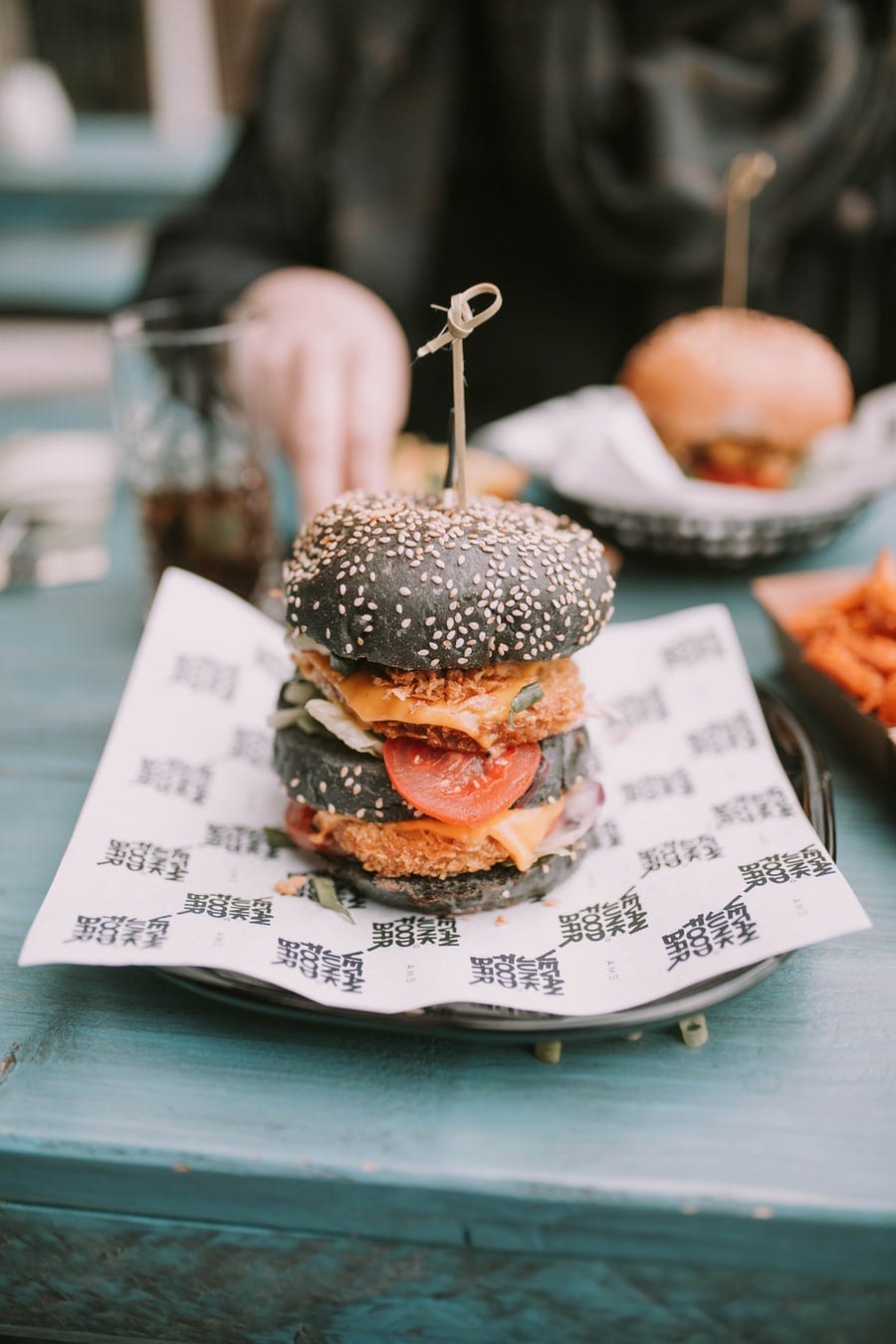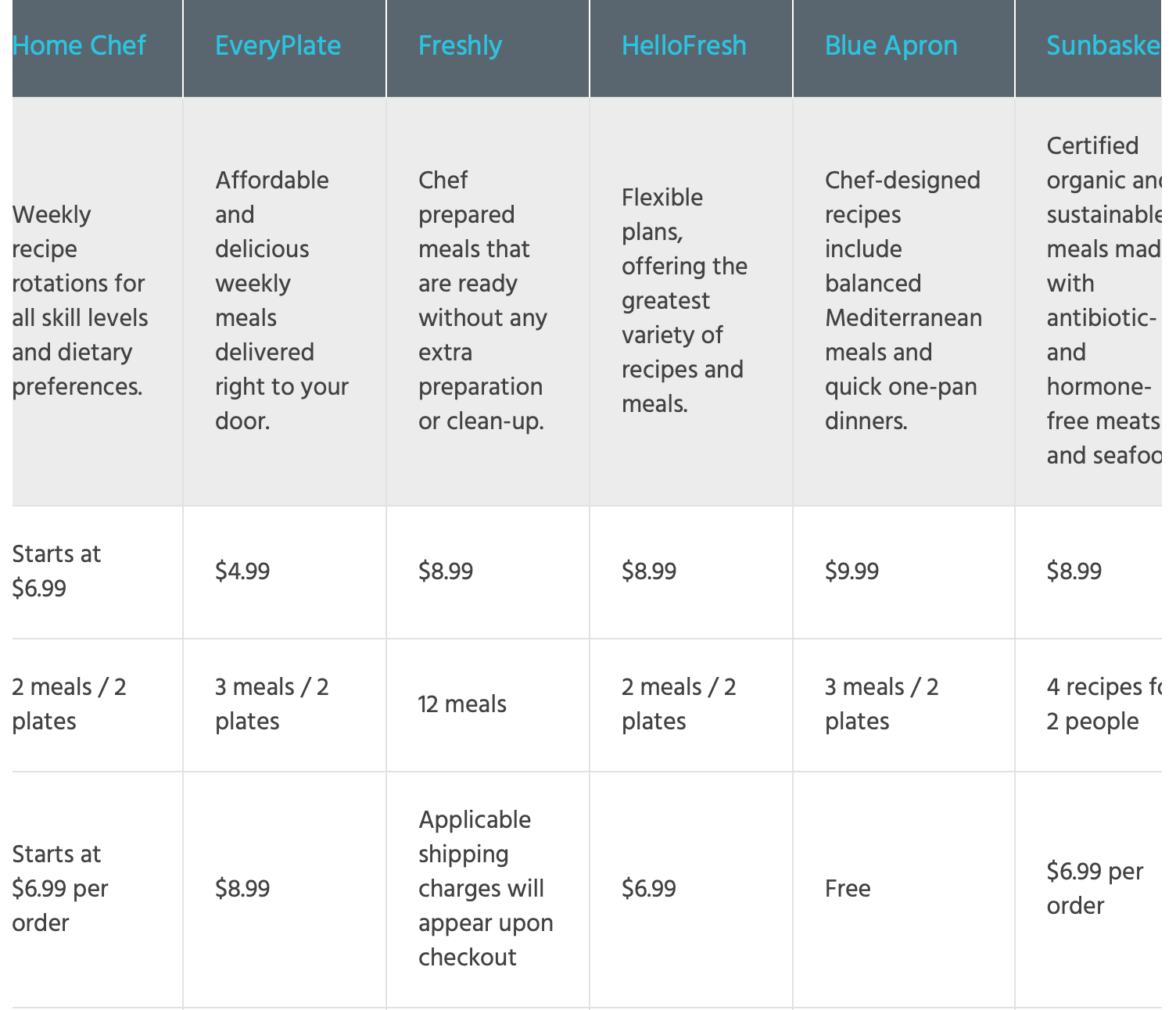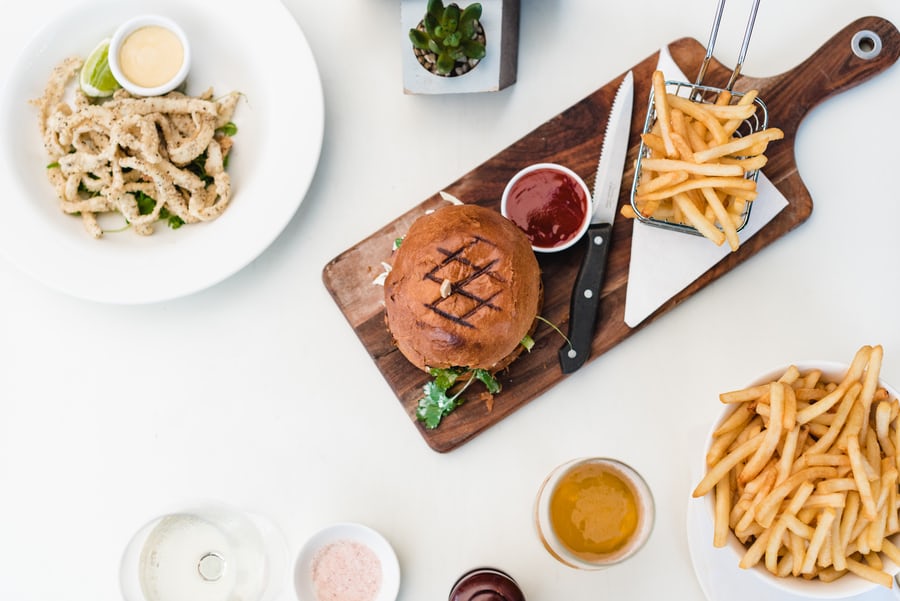It seems obvious that cooking at home provides a multitude of benefits such as eating healthier foods with less additives and fake nutrients along with lowering the cost of food by buying in bulk.
But overtime, have you ever considered what this does to your bank account and waist?
Surprisingly the negatives for eating in outweigh eating out at your favorite restaurant.
The average American eats an average of 4.2 commercially prepared meals per week. In English that means we eat out four to five times a week.
As a kid, my parents were strict about only being able to eat out on weekends, special gatherings or vacations. Never on school nights along with no TV.
The reason being was fortunately not due to any financial constraint rather to supplement all the money wasted on overpriced food and drinks when we did go out since there’s no doubt restaurants charge double for the same meal you can make at home.
It’s no surprise that eating out is more expensive by the meal but compared to grocery shopping per month, for most families it isn’t.

Covid Bloat
The pandemic has only accelerated eating at home and shopping local. As the travel, leisure and hospitality sectors were starving, so were Americans or at least their emotions and cabin fever took the best of them. No more freshman 15 on campus. Hello quarantine 15.
On average, most Americans gained an extra 2 pounds from testing out their new or never used kitchen.
I’m guilty as charged.
While commuting to NYU downtown, although I’m a frugal minimalist who tries to spend wisely, packing a soggy lunch in a lunch box was just not my jam. By the time I opened my lunch pack up, the sandwich would be too moist, soggy, cold and disgusting. I would rather pay extra for better quality.
I ate 2 out of 3 meals at home and lunch, my biggest meal out would usually cost me $10–20 per day.
Now don’t bash at me.
This is NYC.
If you want a decent burrito or a salad besides lettuce and olives you need to pay at least $10 plus wait on a line for 15 mins.
Although I don’t tend to weigh myself often, maybe I should jump on that scale just in case since I have been layering up on those banana bread recipes and testing out my 3rd grade Easy Bake Oven for the first time since I opened it up on Christmas morning 10 years ago!
Yet for some reason, I still haven’t become a fan of cooking. It simply takes too much work to clean, prepare, package and order online. Even BlueApron, SunBasket and HelloFresh, the main food prep delivery services can’t entice me because most meals still have to be prepared on their own.

The only upside is that the ingredients come portioned out so you don’t need to buy a whole jar of this crazy sauce when you just need a teaspoon.
But even if they’re portioned out, I still want the food prepared and warm.
Shouldn’t these meals be prepared?
Hence that’s where eating out comes in.

Food For Life
Part of living life is traveling, trying new foods, getting out of your comfort zone and enjoying a good hardy meal that someone else made. Yet during the pandemic once restaurants closed and Main Street suffered, the least we could do as civilians was support our local mom and pop shops and order out.
Delivery apps have become a staple as people have become lazy waiting wanting their deliveries at their door ASAP and even DoorDash became public late in 2020.
Yet that didn’t mean grocery chains took a hit.
Remember the toilet paper shortage of March 2020?
It took a few months for it to recover to pre-pandemic levels and even now at my local Trader Joes in Tribeca it still is as hectic as when the pandemic just began.
Line out the door no matter what time of day!
I have to get there each Sunday at 7am sharp in order to be the first one in and out not to expose myself to any lingering virus on a New Yorker.
Staying home lead us to binge, eat, drink, watch and Netflix and chill. Oh, and if you’re curious, I haven’t tried Ben N’ Jerry’s Netflix & Chill yet but I heard it was good!

Health Cost
The average American households spends about $3k per year dining out according to the Bureau of Labor Statistics. As a notice, this dramatically varies per state as in Alaska, Massachusetts, New York, Colorado and California, typical families spend around $6-$20k per year due to tax and higher costs of living needing to be taken into account.
In a recent post when I discussed lifting the ban on eating in France due to limiting covid exposure in restaurants, it was fascinating to read how Europeans are so much happier, healthier and physically more attractive because they eat out more.
Believe it or not, there’s a cost to eating in. When you eat out, you are selective about your food and there are designated portion controls.
Yes, there can be extra calories, bigger portions, sodium, starchy foods, free food= more, not organic or whole wheat meals at a restaurant, but when you observe the rich vs poor, the rich overall tend to be healthier due to eating out more.
It’s not a matter of not eating. The poor can be too poor to eat and the rich can be too busy to eat.
It all boils down to portion control, moderation and diet 80% of the time to stay lean and healthy.
The classic rule for loosing weight is 80% diet, 20% exercise. If you eat whole foods from the ground, reduce the non-processed junk, you can still be able to have sugar, dessert, wine and fun in your life!
I recommend the Blue-Zone Mediterranean diet as those countries tend to live the longest and are the happiest.

Master Chef or Guest?
There’s no doubt eating a restaurant per meal is more pricey. From the tip to tax, time wasted (unless you came for the experience), drinks, more drinks and finally the small tiny portion of food is all gauged in price.
Cooking at home costs roughly $7.32 per serving vs. $20.37 at a restaurant.
That’s over 370% more expensive.
To make a profit, restaurants charge about a 300% markup on the items they serve. You’re paying for service and convenience. In many cases, you could make a $15 meal in a restaurant for $5 at home.
Granted, the food you make at home might not taste exactly the same. Sometimes it’s worth it to enjoy a dish made by a professional and it’s usually not all about the food anyway. People often go to bars and happy hour to socialize, celebrate, to try something new, or just take a break from busy lives.
But if you dine out regularly for convenience’s sake, you could save some serious cash just cooking at home but if you are trying to eat less, a restaurant might not be a bad idea.

Factors to Dig In
When I chose to embark on cooking all my meals (3 per day) in March 2020, I knew it would take a lot of work. For my mom and I groceries usually cost us $200 per month.
Besides the grocery bill what must also be taken into account is the time to walk/drive to get the food, wait at the register, put away the groceries and drive back (in my case walk across NYC) which totals up to an average of 2 hours per week for us.
Every Sunday, the only time I can shop otherwise there’s nothing left at 2pm on a Tuesday, I’m at Trader Joes by 7am. I have to wait in line until they open at 8am, grocery shop, walk home, put them away before they melt, clean up and finally prepare and make the food which eventually comes down to 10am.
Not only that, once you get home making the food is another challenge which entails:
-Finding a recipe
-Pulling out all the ingredients
-Cooking
-Cleaning up after cooking
-Setting the table before the meal
-Clearing the table after the meal
-Washing the dishes (or at least putting them into the dishwasher)
-Putting away the clean dishes
Now don’t get me wrong, we can cut corners here.
We have a dishwasher, we don’t need to make the table all fancy and there might not be any ingredients besides food and some table salt needed.
But all of this still does take a considerable amount of time as opposed to driving to the restaurant, waiting, ordering and paying, which in reality takes an extra 30 minutes as well but certainly not 2 hrs.

Yummy Benefit?
On a typical day, when you are debating on eating out or in, what goes through your mind?
If you choose to go to your favorite pizzeria instead of cooking, it’s usually because of a few reasons:
-You are lazy
-Tired
-Bored
-Want to get out
-Try something new
-Be with others/socialize
And when you’re home, it’s the complete opposite.
Out of a 300 person survey, 97% of respondents reported the deciphering factor between eating out or staying in is simply due to their energy levels and hence, eating out is easier and people do it more often per week.
In addition, you need to weigh your time.
The top 1% eat out mainly for every meal not because they are lazy, rather they are busy and know time is their most precious asset.
They cannot cook up a roasted pork and stay by the pressure cooker all day waiting to top some seasoning on it every five minutes.
They eat out and as a result are more commonly healthier because they eat what is served to them and done.
When you are at home, you to tend to make 1 dish and spread it for the whole week. Otherwise spending an hour making only 1 plate of chicken that you’ll have for one night isn’t worth it.
That leads you to naturally go for seconds, sometimes do the illegal double dibbing, eat alone which causes you to eat more, not focus on your drink which leads you to be hungrier and have all the food at your disposable since the fridge, snack cabinet and fruit bowl is staring at you all day every day. When food is available, we eat more.
When you go to a restaurant it is deliberate. You can’t ask for seconds or you have to pay more to do so and you are conscious of that.
When you order something, you savor it more if there’s less as opposed to serving your own serving, you usually give yourself more than you should.
These little tricks we do to ourselves add up over time on the scale and budget.

What To Eat
You don’t need to stop eating out or baking banana bread altogether in order to save.
Most people assume that they need to ditch the daily latte instead of the car purchase in order to get rich.
No, obviously the larger expenses have more weight but you need to prioritize what you can do and what’s realistic.
If everyone could, they would eat out more for enjoyment and leisure but as we’ve discovered, it may not always be healthy and certainly not affordable.
As a 20 yr old who’s dependent on myself, except for insurance, I eat out once a week while I’m not commuting to school because I’m home to be safe.
If you make just two of these meals at home instead, you save $936 — almost $1,000 a year.
Or with your coffee, by making your $2 coffee at home M-F, you’ll save $40 per month, $480 per year!
With a busy schedule, eating out is still really quick and easy. You’ll save far more time from ordering on GrubHub and picking it up than at home, but maybe you won’t enjoy the experience as much as doing it yourself.
Cook enough for two or three meals and reheat leftovers! Eating leftovers, rather than throwing them out, can save you up to $1,000 a year.
Overall, you know yourself best and must stick to what works.
Quick tips to eat out and stay healthy:
-Make sure you know the ingredients before hand
-Try out organic or farm to table stores
-Use a credit card that rewards your spending such as We’ve compiled some of our favorite credit cards for bars and restaurants. The Capital One® Savor® Cash Rewards Credit Card and the Chase Sapphire Preferred® Card come highly recommended.
-Go to lunch or happy hour instated of dinner
-Get used to smaller portions-you really don’t need much food to survive-we overeat double
-Split an entree
-Skip the appetizer or dessert, drinks
-Find restaurants for kid discounts
-Research menus ahead of time
-Eat just appetizers
Just like with exercise to food, moderation is key. The next time your friend says, “let’s save and eat in”, think again because you’re more likely to eat more and be less satisfied at home which can lead to overspending.
Cheers!

